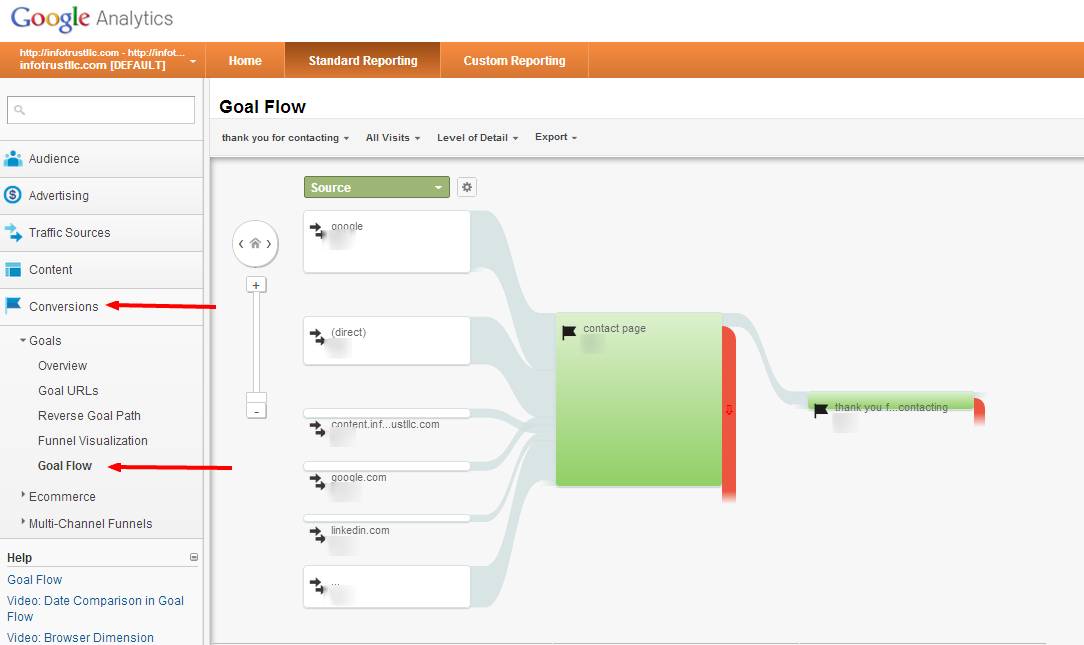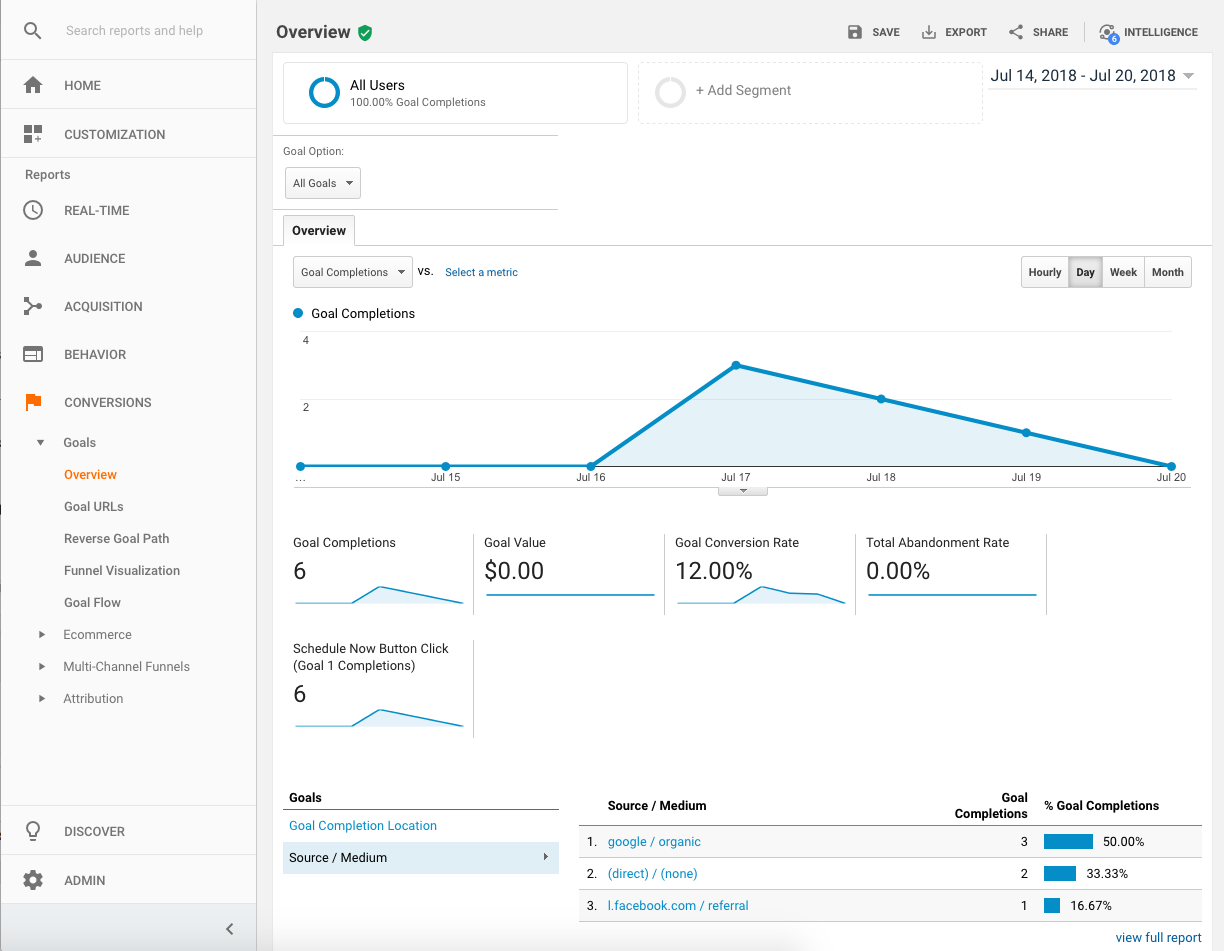Key Insights on What Data Is Google Analytics Goals Unable to Track
Key Insights on What Data Is Google Analytics Goals Unable to Track
Blog Article
Discover the Limitations of Google Analytics Goals: Introducing the Information Types That Remain Untrackable
As services increasingly count on data-driven decision-making, comprehending the limitations of tools like Google Analytics becomes vital. While Google Analytics Goals deal beneficial insights right into individual interactions, there exist information types that avoid tracking, posing obstacles to a comprehensive understanding of individual actions. These untrackable data kinds increase questions about the precision and completeness of the analytics data that companies greatly trust for their electronic strategies. Curious to discover the covert dead spots in your information evaluation process?
Insufficient Individual Trip Tracking
Insufficient individual trip monitoring within Google Analytics can prevent the ability to precisely assess user behavior. When the user journey is not completely tracked, there are gaps in the data that protect against a comprehensive understanding of exactly how individuals interact with a website. This lack of understanding can bring about missed out on chances for optimization and renovations to the user experience.
One common concern with insufficient individual journey tracking is the lack of ability to see the full course that users take previously completing a goal or leaving the site. Without this info, it is challenging to identify where customers might be running into barriers or rubbing factors that avoid them from transforming. Furthermore, insufficient monitoring can obscure the effect of particular marketing initiatives or site adjustments on user behavior.
To address this limitation, it is vital to establish correct monitoring mechanisms within Google Analytics to capture the entire user journey. This might include establishing occasion tracking, objective funnels, or using tools like Google Tag Manager to make sure that no essential communications go unrecorded. By acquiring a thorough view of the customer journey, internet site proprietors can make even more educated choices to improve user involvement and drive conversions.
Attribution Difficulties
Navigating with attribution difficulties in Google Analytics requires a thorough understanding of exactly how different touchpoints add to the overall conversion procedure. Attribution difficulties occur from the intricacy of modern client trips, where users connect with multiple networks prior to converting. Google Analytics supplies numerous acknowledgment versions like very first touch, last touch, and linear, each offering a different perspective on exactly how credit scores is assigned to touchpoints along the conversion path. Nevertheless, these versions might not constantly precisely reflect the real influence of each touchpoint on the conversion.
One typical acknowledgment difficulty is the difficulty in connecting conversions to the proper resource, especially in instances where individuals communicate with numerous channels prior to converting. In addition, cross-device tracking poses an additional attribution obstacle, as users frequently switch in between tools throughout their trip, making it testing to track their communications effortlessly.
Offline Conversions
Given the difficulties connected with associating conversions accurately in online networks, the measurement of offline conversions provides a significant chance for marketing professionals seeking a much more extensive understanding of their consumers' journey. Offline conversions describe actions see page that consumers absorb the physical world, such as making acquisitions in brick-and-mortar shops or over the phone, going to occasions, or engaging with published products - what data is google analytics goals unable to track. These conversions are vital for businesses that run both online and offline, as they provide important understandings right into the effectiveness of advertising and marketing campaigns across different touchpoints
Tracking offline conversions traditionally positioned a considerable obstacle for marketing experts, as it was testing to link these activities back to specific on the internet interactions precisely. However, with improvements in technology, such as the combination of CRM systems, one-of-a-kind identifiers, and coupon codes, services can currently connect the gap in between online and offline data to get an extra holistic sight of consumer behavior. By effectively gauging offline conversions, online marketers can optimize their techniques, assign resources more effectively, and ultimately enhance the total consumer experience.
Cross-Device Tracking
Cross-device monitoring plays a crucial role in recognizing the interconnected nature of consumers' electronic interactions throughout multiple gadgets. In today's omnichannel world, where users seamlessly change between tablets, mobile phones, and desktops, tracking their behavior throughout these tools is necessary for marketing professionals to obtain an extensive sight of their consumer journey.

In addition, personal privacy concerns and policies such as GDPR and CCPA have additionally complicated cross-device monitoring. With customers requiring more control see here over their data and increased restrictions on tracking innovations, marketing professionals need to locate innovative and privacy-compliant ways to connect user communications throughout gadgets.
Dynamic Web Content Interaction
Recognizing customer involvement with vibrant material is critical in optimizing digital advertising and marketing approaches for boosted target market interaction. Dynamic web content refers to web site elements that transform based upon individual behavior, preferences, or various other factors, supplying an individualized experience. Nevertheless, tracking individual communications with vibrant web content positions challenges for traditional analytics devices like Google Analytics.
While Google Analytics can track standard communications like clicks and web page views, it might struggle to record even more nuanced engagements within vibrant material. what data is google analytics goals unable to track. Metrics such as time spent on particular vibrant aspects, float actions, or interactions within pop-ups are frequently not conveniently measurable using typical tracking approaches. This restriction impedes marketing experts' capacity to completely grasp just how customers are engaging with vibrant material and customize their techniques as necessary

Verdict
Finally, Google Analytics goals have constraints in tracking insufficient individual journeys, connecting conversions properly, recording offline conversions, tracking cross-device interactions, and gauging dynamic material engagement. These constraints highlight the value of discovering extra tracking techniques and tools to gain a more thorough understanding of user habits and conversions beyond what Google Analytics can offer.
While Google Analytics Goals deal valuable understandings right into user interactions, there exist data kinds that elude tracking, positioning obstacles to a comprehensive understanding of user habits.Insufficient user trip monitoring within Google Analytics can prevent the ability to accurately evaluate user actions. When the customer journey is not totally tracked, there are gaps in the data that protect against a comprehensive understanding of how individuals interact with a web site.One usual issue with incomplete customer journey monitoring is the inability to see the full course that users take in the past completing an objective or leaving the website. By obtaining an extensive view of the user journey, web site proprietors can make even more enlightened choices to boost customer interaction and drive conversions.
Report this page